The Vatican, the very small independent state that houses the Pope and the machinery of the Catholic church, is visible down just about every sight-line of central Rome.
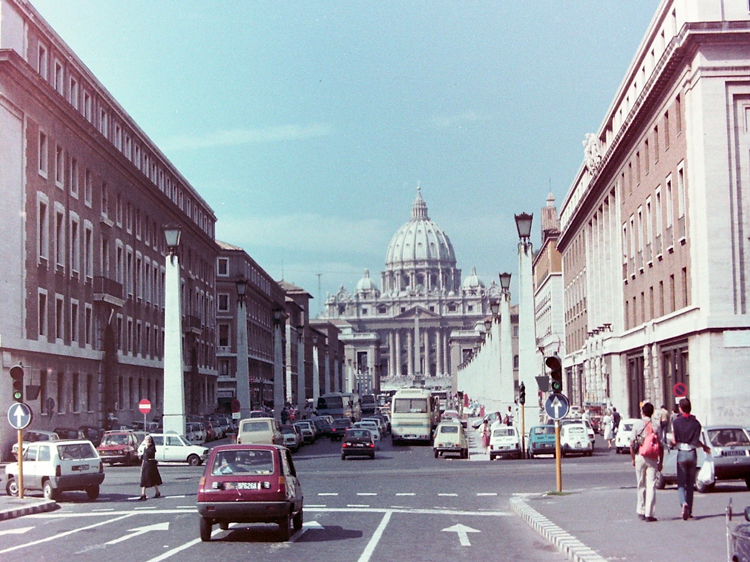
Approaching the Vatican along the Via della Conciliazione
In honour of our impending visit, we first had a (cold) shave in the Rome station bathroom, and then visited a launderette and put on some clean clothes. The launderette conveniently had left-luggage lockers for our back-packs, because we knew that these would be frowned upon in the Vatican.
Tickets were relatively expensive, and we needed to cash some traveller’s cheques. This was always a bit of a trial, and on this occasion we found ourselves having to navigate an airlock-style door to the bank. It would only admit one person at a time, then both doors would lock while you were scanned, before the interior door allowed you into the bank proper. On the way out, the process was repeated, although the exit door could accommodate two whole people at a time. At busy times, this made the simple task of entering and exiting the bank a very long drawn-out process. Presumably in order to pay for this marvel of technology, this bank’s surcharges were horrendous.
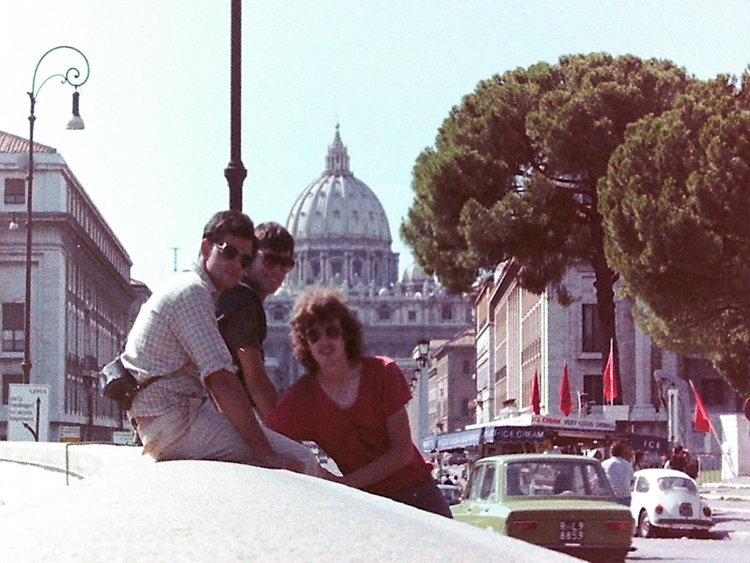
Three men on the way to the Vatican
The Vatican has an interesting tourist layout; you pick the amount of time that you intend to spend, and then follow the associated coloured arrow. We chose 3.5 hours, the second-longest, and set off to explore.
The interior of the Vatican is truly amazing. I had never before been in a building so thoroughly painted, and to my mind it rivalled the nearby Basilica Di San Giovanni, even if the ceilings were slightly less ornate.
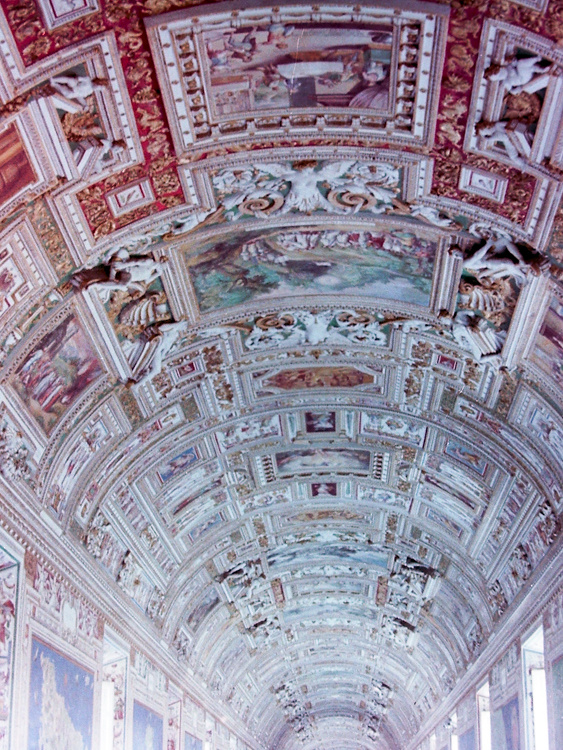
Ceiling of the Hall of Maps 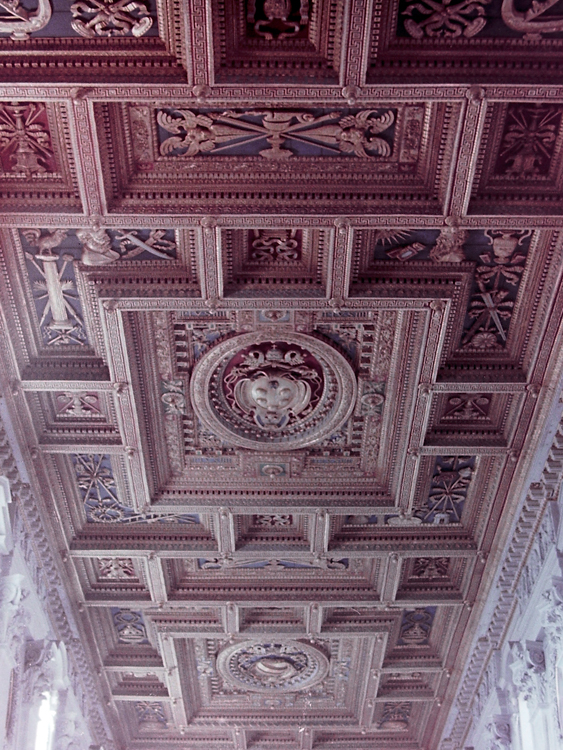
Ceiling of St Peter’s Basilica
We were blown away by Michaelangelo’s fresco in the Sistine Chapel, although I did note in my diary that it was looking a bit faded. This was a few years before the ceiling was restored in the late eighties.
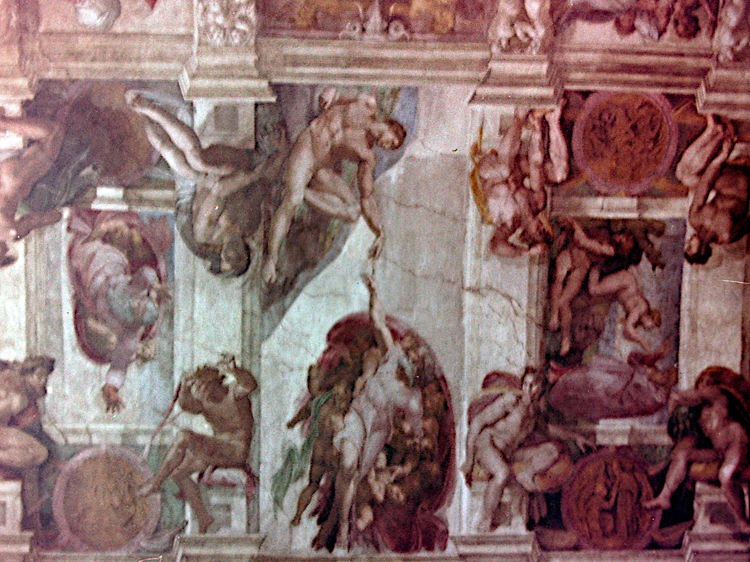
The famous centrepiece of Michelangelo’s ceiling fresco in the Sistine Chapel, 1983.
The Map Rooms are simply wonderful, with ancient hangings depicting the known world as seen from Rome. The Raphael rooms consist of wall after wall of enormous biblical scenes, but his preoccupation with death got me down after a while, not to mention the three huge tapestries dedicated to the Massacre of the Innocents.
As an impressionable teenager, I was fascinated by the considerable collection of parts of old saints; fingers still wearing rings, gilded splinters of bone, and even entire bodies on display. It seems that, once you have been declared a martyr, nothing is sacred.
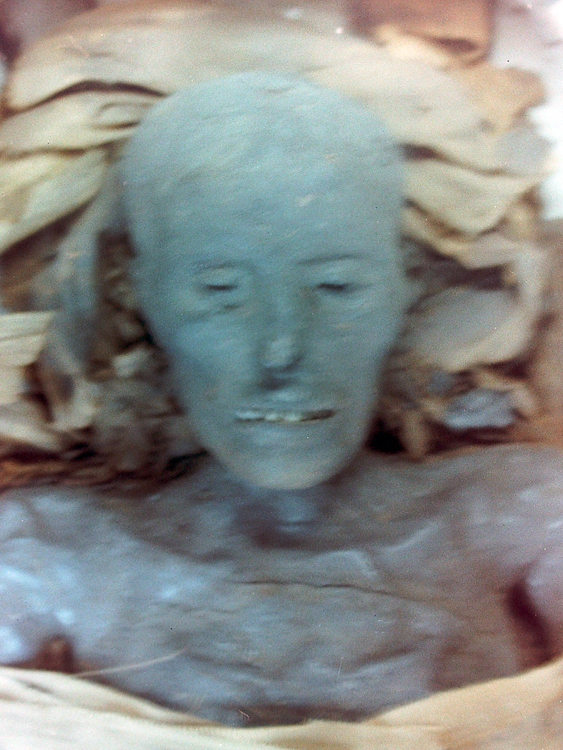
A dead saint 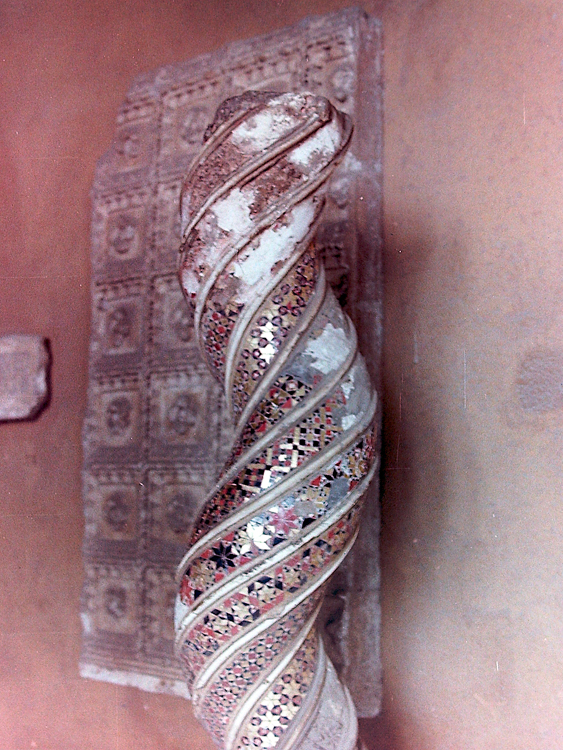
Gilded cloister pillar
In the end, it was the incredible riches to be found in the Vatican Museums that formed my most lasting memory. Walking through room after room of impossibly gilded and bejewelled artefacts, the gifts from rulers and pontiffs down through the centuries, where even the intervening stone pillars are painted with gold, I found it impossible to reconcile the obvious and flaunted wealth of the home of the Catholic church with the air of humility that they try to project. As I write this over thirty years later, I look back and see that this one visit forever coloured my view of the religious world.